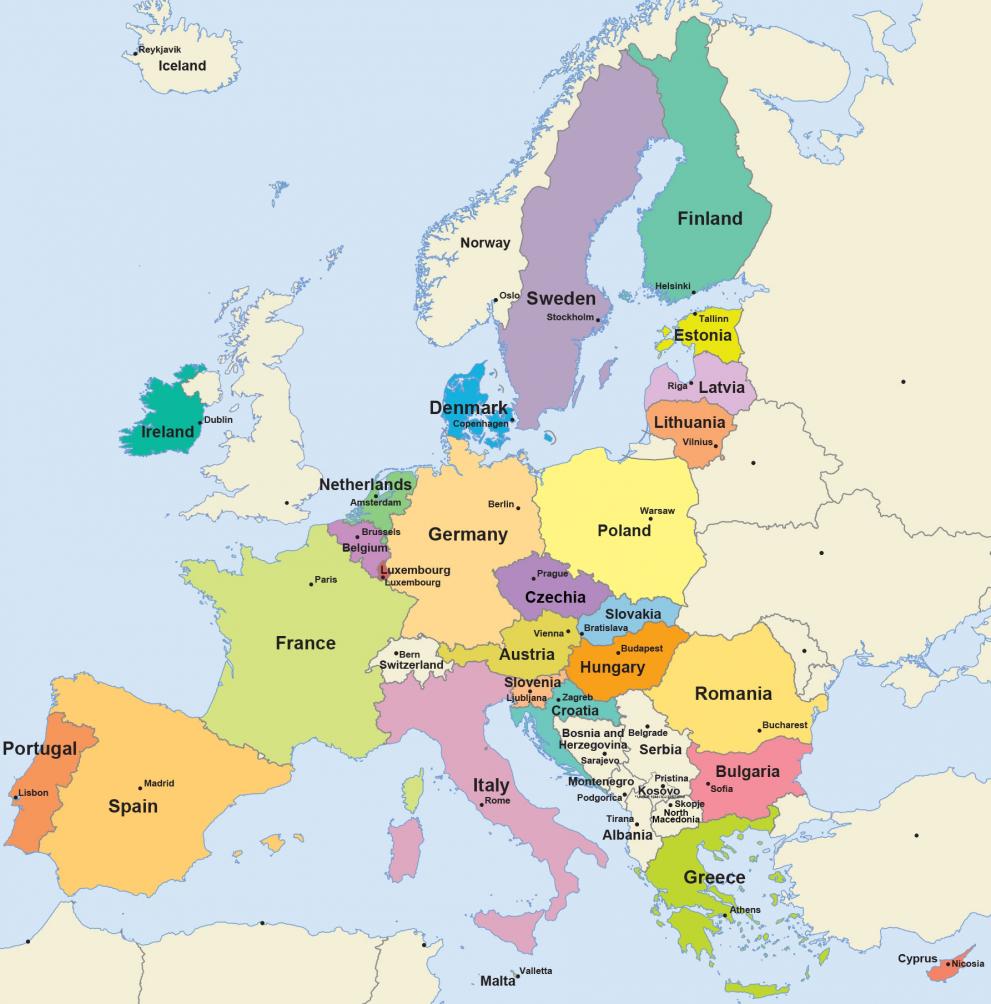Europe is a continent located entirely in the Northern Hemisphere and mostly in the Eastern Hemisphere. It is bordered by the Arctic Ocean to the north, the Atlantic Ocean to the west, and the Mediterranean Sea to the south. It comprises the westernmost part of Eurasia.
Europe is commonly considered to be separated from Asia by the watershed divides of Ural Mountains, Ural River, Caspian Sea, Caucasus Mountains, Black Sea, and Kerch Strait connecting the Azov Sea. Europe covers about 10,180,000 square kilometres (3,930,000 sq mi), or 2% of Earth’s surface (6.8% of land area). Politically, Europe is divided into about fifty sovereign states which share borders with each other and are gathered as members of various international organizations such as Council of Europe or European Union.
Geologically, Europe can be referred to as a single large peninsula consisting of mainland Britain (including Ireland), Iceland, Scandinavia (Norway and Sweden together with Finland), Jutland peninsula, Denmark, Baltics (Lithuania, Latvia and Estonia), Balkans (Albania, Bosnia-Herzegovina Croatia Montenegro North Macedonia Serbia Slovenia) East-Central Europe(Czech Republic Slovakia Hungary Poland Romania Moldova Ukraine Belarus) Western Russia, Central Russia, Southern Russia.
From an ecological perspective European countries can be broadly classified into two ecozones: The Euro-Siberian zone including almost all of European Russia; Fennoscandia; northern parts of Central Europe; most alpine areas; and some parts of southern Europe including Crimea , Iberian Peninsula , Italy , Greece . The temperate deciduous forest ecozone extends across much central eastern France ; Germany ; lowland Poland ; Czech Republic ; Slovakia ; Austria ; Hungary ; Romania -Bulgaria -Moldova -Ukraine -Belarus -Lithuania . This ecozone also includes most broadleaved mixed forests except those in Scandinavia which belong instead to taiga . A smaller but distinct ecozone lies along southern shores including portions of Spain Portugal Morocco Algeria Tunisia which has a warm dry climate similar to that found further inland on Mediterranean coasts at lower elevations around Earth’s subtropical belt.:100–101
Europeans generally regard themselves as belonging to one or more nationalities while sharing common values regarding culture society religion politics economics law etc. In addition they perceive themselves as citizens bound by supranational loyalties such as those arising from membership in NATO or from participation in European integration processes through institutions such as EU. All this suggests that there is considerable cultural diversity within Europe even though Europeans tend towards certain shared characteristics often referring to themselves collectively as “Westerners”.”


